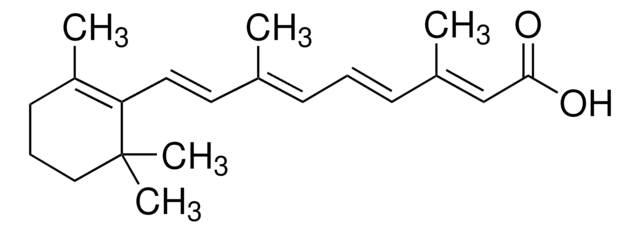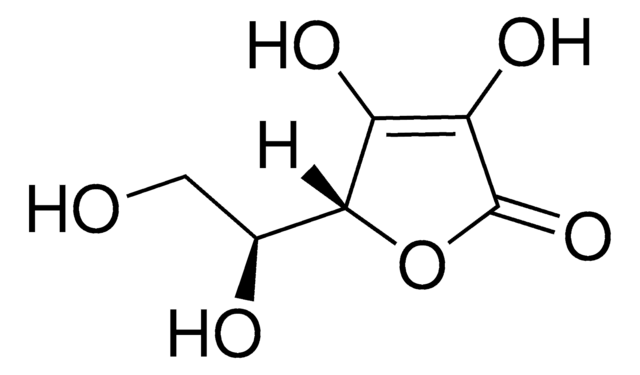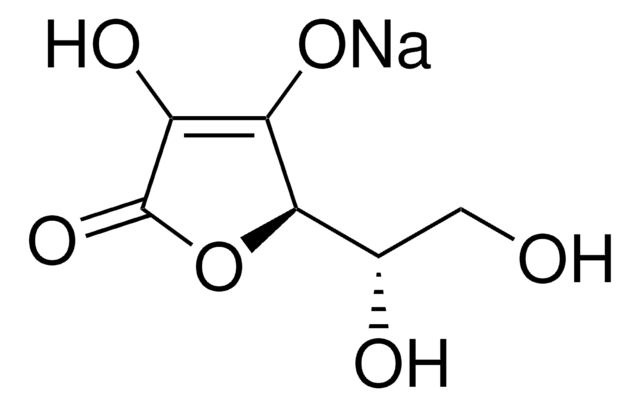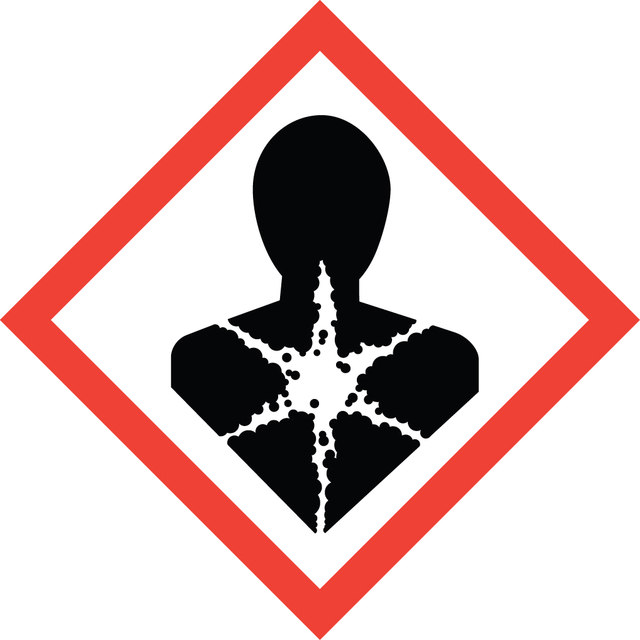所有图片(2)
About This Item
经验公式(希尔记法):
C22H32O2
CAS号:
分子量:
328.49
Beilstein:
1915439
MDL编号:
UNSPSC代码:
12352205
NACRES:
NA.75
推荐产品
生物来源
synthetic (organic)
质量水平
产品线
BioReagent
表单
powder
技术
cell culture | mammalian: suitable
颜色
white to light yellow
mp
57-58 °C
溶解性
H2O: 400 mg/mL
储存温度
−20°C
SMILES字符串
CC1=C(/C=C/C(C)=C/C=C/C(C)=C/COC(C)=O)C(C)(C)CCC1
InChI
1S/C22H32O2/c1-17(9-7-10-18(2)14-16-24-20(4)23)12-13-21-19(3)11-8-15-22(21,5)6/h7,9-10,12-14H,8,11,15-16H2,1-6H3/b10-7+,13-12+,17-9+,18-14+
InChI key
QGNJRVVDBSJHIZ-QHLGVNSISA-N
正在寻找类似产品? 访问 产品对比指南
一般描述
Retinyl acetate does not exists naturally, but is derived from retinol. It is considered to be more chemically stable than retinol. For this reason it serves as a dietary supplement for vitamin A source. Vitamin A is found in food of animal origin especially liver and also present in brightly colored vegetables. Vitamin A is a member of carotene family, which is a key component in plant pigments.
应用
Retinyl Acetate-Water Soluble has been used as a component of culture medium for secretory cells of venom gland among different Viperidae snakes. It has also been used in testis chunk culturing.
Use to study retinoid regulation of cell transformation; cell differentiation and stem cell development.
生化/生理作用
Retinyl acetate is known to prevent carcinogenic polycyclic hydrocarbon, methylcholanthrene induced morphological transformation.
包装
Package size based on retinol acetate content
公式变量
With a minimum of 3 mg retinol acetate per gram; balance methyl-β-cyclodextrin.
警示用语:
Danger
危险声明
危险分类
Repr. 1B
储存分类代码
6.1C - Combustible acute toxic Cat.3 / toxic compounds or compounds which causing chronic effects
WGK
WGK 3
闪点(°F)
Not applicable
闪点(°C)
Not applicable
个人防护装备
Eyeshields, Gloves, type N95 (US)
Specifications and Criteria for Biochemical Compounds, 1344, 188-188 (1967)
Advanced Nutrition Micronutrie, 23-23 (2018)
Biological Responses in Cancer: Progress toward Potential Applications, 2, 62-62 (2013)
Long-term primary culture of secretory cells of Bothrops jararaca venom gland for venom production in vitro
Yamanouye N, et al.
Nature Protocols, 1(6), 2763-2763 (2006)
Robert E Chapin et al.
Birth defects research. Part B, Developmental and reproductive toxicology, 107(6), 225-242 (2016-12-27)
The last two decades have seen an increasing search for in vitro models that can replace the use of animals for safety testing. We adapted the methods from a recent nonquantitative report of spermatogenesis occurring in ex vivo mouse testis
我们的科学家团队拥有各种研究领域经验,包括生命科学、材料科学、化学合成、色谱、分析及许多其他领域.
联系技术服务部门




